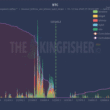Gold is shattering records in 2025, climbing past $3,400 and closing in on historic highs as geopolitical strife in the Middle East and unprecedented central bank buying intensify investor interest in safe-haven assets. The precious metal’s surge signals a dramatic shift in global reserve strategy, with gold now surpassing the euro as the world’s second-favorite reserve store.
Geopolitics Send Investors Flocking to Gold
Escalating conflict in the Middle East, highlighted by Israel’s recent strike on Iranian nuclear facilities, has pushed market anxiety to new heights. This turmoil is driving a pronounced flight to safety, as investors retreat from riskier assets in favor of gold’s stability. The fallout from mounting tensions has been felt across global markets: the Dow Jones Industrial Average saw a sharp 679-point drop, and the S&P 500 declined by 1.13%. Meanwhile, oil prices soared 7% in a single session—marking the largest one-day spike since the early days of the Ukraine crisis. These developments have reignited inflation concerns, as elevated fuel costs ripple through the global economy, further boosting gold’s allure as both a hedge against uncertainty and a shield from rising prices.
Central Banks Fuel Gold’s Historic Rally
The world’s appetite for gold is being matched by an unprecedented buying spree from central banks. In 2024, gold overtook the euro as the second-largest reserve asset globally—an event underscoring a major evolution in international finance. The European Central Bank’s latest data shows the U.S. dollar remains dominant with a 46% share of global reserves, but gold now claims 20%, pushing the euro into third place at 16%. This strategic move comes amid increasing efforts by central banks to insulate themselves from geopolitical risk and currency volatility. For the third year running, central institutions have purchased over 1,000 tonnes of gold annually—double the pace of the previous decade. This rush for bullion has solidified gold’s reputation as the go-to asset in uncertain times, a sentiment echoed by influential voices such as Peter Schiff, who cited the outperformance of gold mining stocks as a clear sign of the market’s new momentum.
Key Stats & Figures
- Spot Gold Price: Climbed above $3,400, up nearly 5% in the past month and over 30% since the start of 2025.
- Market Movements: Dow Jones down 679.83 points; S&P 500 fell by 1.13%; oil jumped 7% in one day.
- Central Bank Reserve Shares (ECB, 2024): U.S. Dollar at 46%, Gold at 20%, Euro at 16%.
- Gold Purchases: Central banks buying exceeds 1,000 tonnes annually for three consecutive years—twice the speed of the last decade.
Bitcoin Holds Steady As Gold Dominates Reserve Landscape
While gold has reaffirmed its dominance as the world’s premier safe-haven asset, Bitcoin has demonstrated remarkable resilience with prices hovering around $105,000, despite recent financial market upheavals. Even as central banks and traditional investors pile into gold, Bitcoin has yet to rival the yellow metal’s status as the ultimate safe asset during periods of turmoil. The parallel growth of both assets highlights an evolving global marketplace—where digital and traditional stores of value coexist, but only one currently commands the lion’s share of institutional trust amid crisis.
Conclusion: What This Means for the Market
Gold’s charge past $3,400 in 2025 is more than a reaction to headline risk; it is a reflection of seismic shifts in how nations and investors view financial stability and reserve allocation. Central bank demand, persistent geopolitical flashpoints, and the need for inflation protection are all converging to put gold center stage. As the global financial order evolves, gold’s newfound status as the world’s second-leading reserve asset will remain a bellwether for market sentiment and central bank strategy—while crypto assets like Bitcoin continue to watch from the wings.
